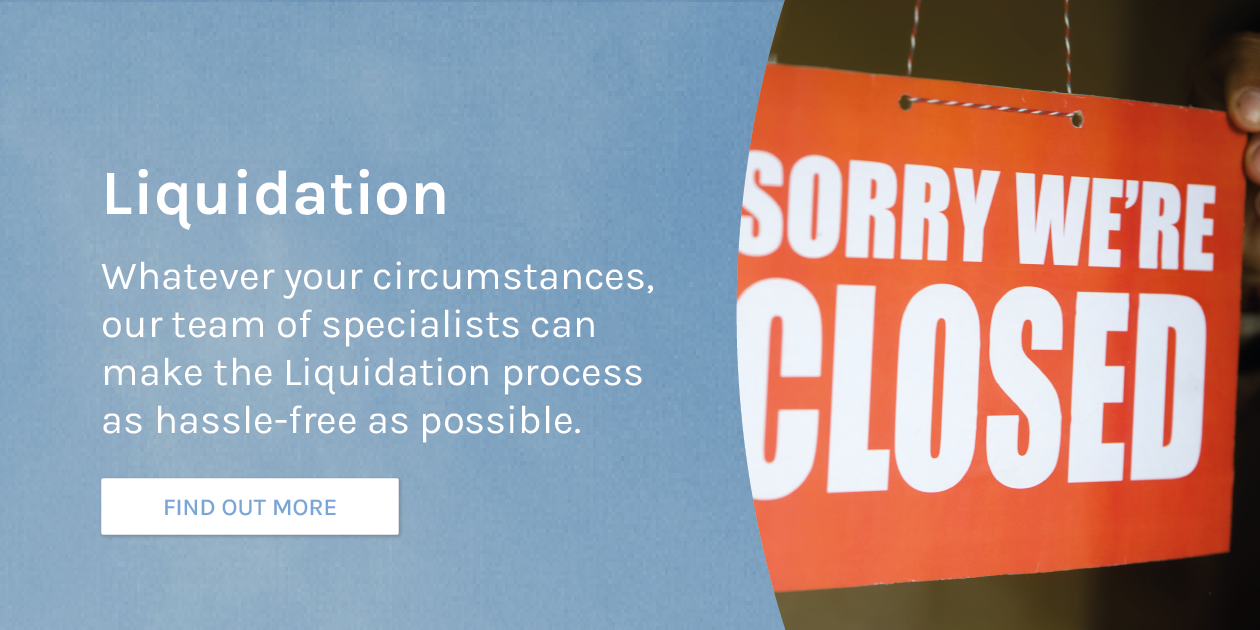Navigating Staff Payments: If a Company Goes Into Administration, Do Administration Staff Still Receive Their Wages?
Navigating Staff Payments: If a Company Goes Into Administration, Do Administration Staff Still Receive Their Wages?
Blog Article
Business Insolvency Company
7 Preswich Avenue, Leigh, WN7 1RZ
0333 567 1686
Comprehending the Effects of Business Liquidation on Staff Member Retention and Benefits

Influence on Work Security
In the event of business liquidation, the effect on task security can be significant for workers as uncertainty regarding future work occurs. When a business enters into liquidation, workers encounter the complicated possibility of potential task loss. This uncertainty can bring about increased anxiety and anxiety amongst the labor force, influencing their spirits and performance.
During the liquidation process, employees might experience a variety of feelings, consisting of temper, concern, and frustration, as they come to grips with the opportunity of joblessness. The lack of clearness bordering the timeline of the liquidation and the destiny of their settings can create a feeling of instability within the labor force.
Additionally, staff members may additionally be worried about the status of their advantages, such as medical care insurance coverage, retirement, and paid time off, throughout and after the liquidation process. The possible loss of these benefits includes one more layer of intricacy to an already difficult situation for staff members.
Modifications in Staff Member Conveniences

One usual modification is the reduction or elimination of particular benefits to cut prices and settle arrearages. Company payments to retired life plans may stop, leaving staff members to bear the complete responsibility of conserving for their future. Healthcare benefits may be scaled back, resulting in greater out-of-pocket expenses for clinical solutions.
Interaction ends up being extremely important throughout this duration of change. Employers have to be transparent regarding the modifications, giving clear explanations and aid to aid staff members browse with the modifications. Open dialogue and support can assist alleviate stress and anxiety and unpredictability among the workforce, cultivating an extra positive transition experience regardless of the difficult situations.
Retention Methods Post-Liquidation
Adhering to the company liquidation, applying reliable retention techniques is critical to guarding organizational ability and preserving stability within the workforce. In times of unpredictability, staff members might really feel distressed regarding their future job security and be much more likely to seek alternative employment possibility. To mitigate this danger, firms ought to concentrate on open interaction, providing transparency concerning the business's situation, and offering support to staff members throughout the change duration.
One trick retention technique post-liquidation is to prioritize employee wellness and morale. Furthermore, using job growth chances and upskilling programs can boost worker inspiration and interaction throughout tough times.
Furthermore, developing a clear career progression path and establishing practical objectives can offer workers a feeling of instructions and purpose within the business (what happens to staff when a company goes into liquidation). By buying employee development and proactively involving them in decision-making processes, companies can raise staff member retention rates and develop a resilient labor force post-liquidation
Legal Rights and Defenses
During the aftermath of firm liquidation, it is essential to deal with the legal civil liberties and defenses offered to workers to ensure a compliant and reasonable process. Staff members facing job loss as a result of liquidation have have a peek at this site specific civil liberties guarded by employment legislations. These legal rights consist of privileges to unpaid wages, severance pay if suitable, and accrued getaway or authorized leave payouts. It is critical for workers to understand these civil liberties and look for lawful guidance if needed to navigate the intricacies of the liquidation procedure.
Furthermore, in situations where a business goes right into liquidation, employees are typically considered preferential lenders, providing them greater concern in receiving exceptional payments over various other financial institutions. This defense helps focus on settling worker claims prior to various other financial obligations are met. In addition, legal safeguards exist to avoid unfair dismissals throughout liquidation, guaranteeing that discontinuations are brought out according to established labor laws. Understanding these legal rights and defenses is basic for employees to guard their passions and look for appropriate recourse in case of firm liquidation.
Dealing With Financial Unpredictability
Navigating economic uncertainty can be a challenging obstacle for employees impacted by firm liquidation. During such times, it is essential for staff members to evaluate their present financial circumstance realistically.
Looking for monetary counseling or look at this site assistance from experts can provide important understandings right into managing financial obligations, restructuring financial obligations, and preparing for the future. It is crucial for workers to remain notified regarding their privileges, such as severance bundles or exceptional repayments, to ensure they receive what they are owed. Thinking about different employment choices or job chances can aid bridge monetary spaces throughout this transitional duration. By proactively addressing economic obstacles, workers can navigate via the unpredictability brought on by company liquidation with greater durability and readiness.
Conclusion
To conclude, company liquidation can have substantial implications on employee job safety and security, benefits, and total wellness. It is crucial for companies to carry out retention approaches and give assistance to employees during this unpredictable time. Recognizing legal rights and defenses can aid reduce the influence of liquidation on workers. Managing economic unpredictability calls for a positive method and interaction from both employees and employers to navigate through the challenges efficiently.
When a firm faces liquidation, the fate of its employees hangs in the balance, increasing vital questions regarding work safety, benefits, and lasting stability. The impact of firm liquidation on employee retention and benefits is a complex problem that demands a closer evaluation to understand the full scope of its consequences.
Navigating monetary uncertainty can be a difficult challenge for workers impacted by firm liquidation. By proactively resolving financial obstacles, staff members i loved this can navigate via the unpredictability triggered by firm liquidation with greater resilience and preparedness.

Report this page